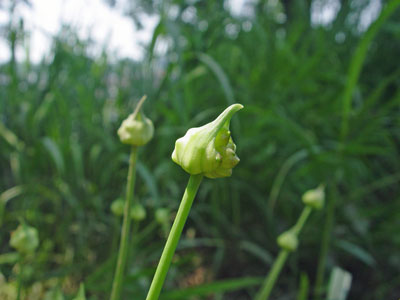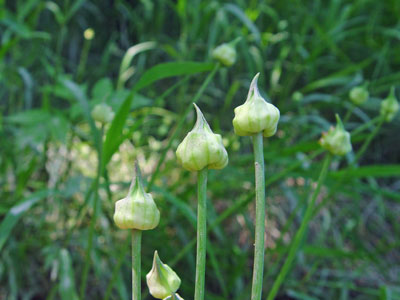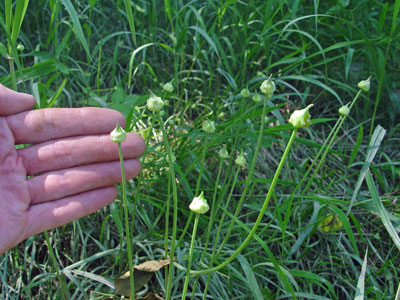DACF Home → Bureaus & Programs → Maine Natural Areas Program → Communities, Plants, and Animals → Rare Plants → Allium canadense

Allium canadense L.
Wild Garlic
- State Rank: S2
- Global Rank: G5
- State Status: Special Concern
Habitat: Alluvial woods, thickets, and meadows. [Forested wetland; Hardwood to mixed forest (forest, upland)]
Range: New Brunswick to North Dakota, south to Florida and Texas.
Aids to Identification: Tight clumps of soft, linear, not hollow, keeled leaves with a distinctly onion-like smell. The bulbs are 1-3 cm long and have a fibrous outer coat with diamond-shaped spaces between the nerves. The flowers are pink or white, but are often replaced by sessile bulblets.

Ecological characteristics: Usually found in rich wooded bottomlands (hardwood floodplain forests), in alluvial soils near streams. Vegetative reproduction, both by the inflorescence bulblets and underground bulbs, is common and the plant may become dominant, its leaves forming dense mats over small areas.
Phenology: Flowers in early summer.
Family: Alliaceae
Synonyms: Represented in Maine by Allium canadense var. canadense. Synonyms include Allium canadense L. var. robustum Farw.
Known Distribution in Maine: This rare plant has been documented from a total of 17 town(s) in the following county(ies): Aroostook, Cumberland, Kennebec, Knox, Penobscot, Somerset, York.

Reason(s) for rarity: At northern limit of its range, not rare southward.
Conservation considerations: Effects of logging are not well known; partial removal of the canopy would be less likely to adversely affect the plant than would complete removal.